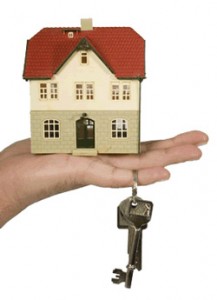
The lender wants to make sure that when they loan money to a you, that they are lending the money to someone who will pay them back. So when you apply for a loan, the number one thing they look at is your credit score. I know, that’s a twist from the roaring 2005-2007 years. I remember selling real estate in Grass Valley, Nevada City where the main criteria of the banks to loan money was that the buyer was breathing.
Anyhow, a lender considers several factors about a buyer’s credit-usage behaviors. The system they use is a called “Tri-Merged Residential Credit Report” and is quantified as a scoring system called F.I.C.O. (Fair Issac Company). There are three companies who prepare credit reports and each one seems to come up with their own F.I.C.O. score. Different lenders use different methods, but most wind up using the middle score of the three credit reports. Others merge the reports as mentioned above.
Listed below is how the F.I.C.O. scores are generally interpreted:
• Scores range from 300 to 850.
• Score under 600 – will most likely need to use loan programs that are not F.I.C.O. driven. Represents extreme concern for underwriting and may result in additional fees, higher rates and/or points, additional down payment required, or even non-approval.
• Score 600 – 620: The underwriter will need to carefully review the application and may result in more fees, points and/or lower loan-to-value ratio.
• Score 620 – 660: This is considered a cautious risk although the buyer does stand a good chance of getting the loan provided he/she can explain any derogatory notations (i.e. late payments) in a plausible manner.
• Score 660 – 680: This is a standard automated approval score.
• Score 680 – 699: This is considered a very good risk by the lender.
• Score 700 – 719: This is considered an excellent risk by a lender and is pretty much a “slam dunk” for approval.
• Score 720 & above: This is considered “Accept Plus” for automated underwriting.
To determine the borrower’s credit score, most lenders apportion weights as indicated to the following factors:
• Timely payments – 35%
• Total debt – 30%
• Length of credit history – 15%
• New credit inquiries – 10%
• Amount/type of credit – 10%
A buyer/borrower can get a free copy of their credit report from each repository by mail or online at various websites offering “free credit reports” . I do not endorse any of them. You should review your credit report once a year, as they often have inaccuracies and old derogatory notations that should be removed from the report.
However, you will find that most sites offering “free credit reports” do not give you your F.I.C.O. score and try to trap you into paying for an ongoing credit monitoring program or you have to pay to get your score, the report is free, the score is not.
According to CNN:
“Thanks to the Fair and Accurate Credit Transactions Act, or FACT Act, enacted by Congress in 2003, consumers can get one free credit report a year from the three major agencies – Equifax, Experian and TransUnion. But that doesn’t include scores, which come at an added cost of around $6 to $16. That’s the “fair and reasonable” fee credit rating agencies can charge consumers under the legislation.”
Here are some methods that you may use to improve your credit score:
• Dispute incorrect information by directly contacting the credit reporting agency.
• If you have any past-due debt, you can contact the creditor directly and settle the debt. Creditors are often willing to settle past-due debt for less than what is owed and sometimes are even willing to remove the derogatory notation about the debt. If the debt has been sold to a collection agency, the borrower would have to contact the agency.
• Pay down credit card balances, if possible, to less than 1/3 of the available limit.
• Work to show that you have maintained 12 consecutive months of timely payments on ALL of your financial obligations. If you have gone into foreclosure and/or bankruptcy, this will take longer; perhaps three to five years.